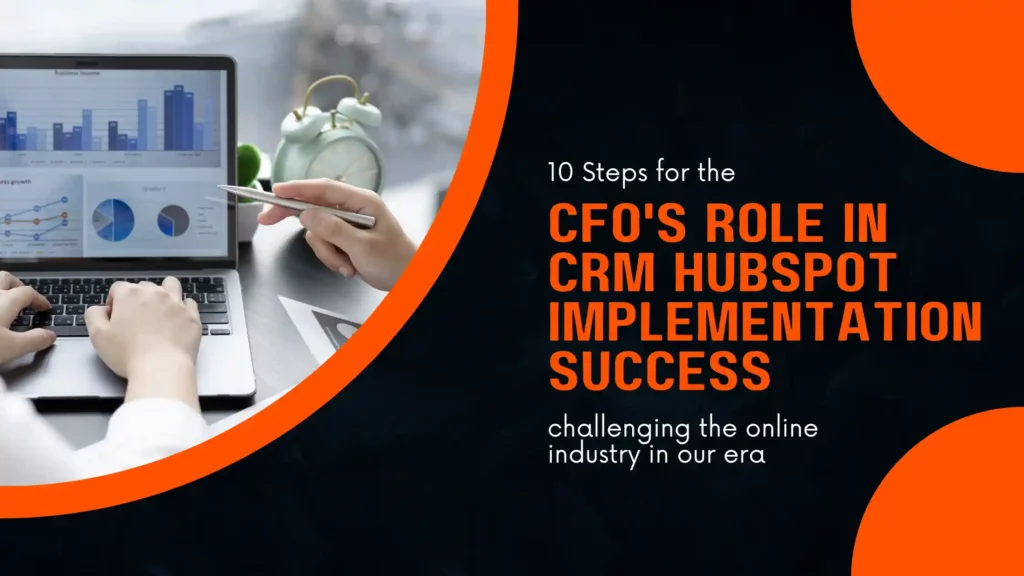How to Create a Marketing Budget That Drives Results
Learn How to Create a Marketing Budget That Drives Results
How to Create a Marketing Budget That Drives Results: A Blueprint for Modern Brands
In the enigmatic brand-building world, there lies an unsung hero: the Marketing Budget. But not just any budget – one sculpted with precision, foresight, and a dash of audacity. Picture this: a vast chessboard, each piece representing an element of your brand’s strategy, awaiting your masterful move. However, as any grandmaster will attest, success is not merely about moving pieces but the strategy that propels them. Enter the realm of result-driven marketing planning.
The tapestry of today’s marketing landscape is intricate, pulsating with opportunities and fraught with pitfalls. Yet, in this cacophony, how does one ensure that every dollar invested isn’t merely spent but sown, ready to reap a harvest of unparalleled ROI?
It’s an art combined with the understanding of a seasoned strategist and the insight of a visionary. The Marketing Budget is no longer a mundane numbers ledger; it’s the heart of your brand’s success narrative.
Consider for a moment the symphony of a brand campaign that resonates, lingers, and compels. Behind this magnum opus lies meticulous marketing planning, the unsung maestro harmonizing every note, every crescendo, every pause. But the linchpin?
Ensuring that every cent allocated is optimized for maximum ROI. In the alchemy of brand building, your Marketing Budget is the philosopher’s stone, transforming base investments into golden results.
As we stand at the cusp of a new marketing era, the clarion call is clear: Evolve or evaporate. Brands that harness the power of a robust, result-oriented Marketing Budget will survive and thrive, setting benchmarks and charting unexplored territories.
So, as you embark on this journey of crafting a budget that’s efficient and productive, remember: It’s not about how much you spend but how wisely you invest. The future beckons, radiant with promise. Will your brand rise to the occasion? The blueprint to driving results awaits your mastery.
The importance of a well-planned marketing budget cannot be understated. It can spell the difference between success and failure in your marketing efforts. This blog post will provide a step-by-step guide to creating a marketing budget that gets results.
Whether you are a seasoned marketer or a startup owner looking to make your mark, this guide will give you the necessary tools to create an effective marketing budget.

Better Search Ranking
Better Search Ranking in 90 days
SEO is extremely important for companies to rank on search because it is the primary way that people find information online.
Understanding the Importance of a Marketing Budget
Before diving into the practical steps of creating a marketing budget, it’s essential to understand why having one is so vital. A marketing budget provides a clear roadmap of where your marketing funds are going and why.
It helps better decision-making, tracking ROI (ROI), and measuring success. A marketing budget is a strategic plan that drives your marketing activities toward obtaining your business goals.
Analyzing Your Company’s Financial Situation
The first step in creating a marketing budget is understanding your company’s financial situation. It includes knowing how much your company will spend on marketing activities. One common method is allocating a percentage of your company’s total revenue to marketing.
For small businesses, it’s generally between 10 to 15% of their total revenue, but this can vary depending on the industry and the company’s growth stage. You should consider the financial realities and goals of your company when deciding the amount to allocate.
According to the 2023 Marketing Budget Survey by Gartner, the average marketing budget for technology companies is 14.6% of total revenue. This means that a technology company with total sales of $100 million should expect to spend around $14.6 million on marketing in 2024.
However, there is a wide range of marketing budgets among technology companies. Some companies spend less than 10% of their revenue on marketing, while others spend more than 20%. The amount that a company spends on marketing will depend on several factors, including its size, industry, and growth goals.
Here are some things to consider when determining your marketing budget:
- Your industry: Some industries, such as consumer electronics and software, are more competitive than others. Companies in these industries may need to spend more on marketing to stay ahead of the competition.
- Your target audience: If you are targeting a global audience, you will need to spend more on marketing than if you are targeting a local audience.
- Your growth goals: If you want to grow your business rapidly, you will need to spend more on marketing than if you are content to maintain your current growth rate.
If you are still determining how much to spend on marketing, you can talk to other technology companies in your industry or hire a marketing consultant. They can help you assess your needs and develop a marketing budget that is right for your business.
Here are some tips for getting the most out of your marketing budget:
- Focus on your target audience: Make sure that your marketing campaigns are targeted to the right people. This will help you to save money on advertising to people who are not interested in your products or services.
- Track your results: Track the results of your marketing campaigns to see what works and what does not. This will help you to improve your campaigns over time.
- Be flexible: Be prepared to adjust your marketing budget as needed. For example, if a particular campaign is not working, you can reduce your spending on that campaign and allocate more money to other campaigns.
By following these tips, you can ensure that you are getting the most out of your marketing budget and helping your technology company to grow.

Setting Your Marketing Goals
The next step is to identify your marketing goals. These goals should align with your overall business objectives and consider what you expect your marketing activities to achieve.
This could be anything from improving brand awareness and increasing website traffic to driving sales or expanding into new markets. Your goals will shape your strategies and determine where your marketing budget is directed.
The average marketing budget for technology companies is 14.6% of total revenue. This means that a technology company with total sales of $100 million should expect to spend around $14.6 million on marketing in 2024. According to the 2023 Marketing Budget Survey by Gartner.
However, there is a wide range of marketing budgets among technology companies. Some companies spend less than 10% of their revenue on marketing, while others spend more than 20%. The amount that a company spends on marketing will depend on many factors, including its size, industry, and growth goals.
Here are some things to consider when determining your marketing budget:
- Your industry: Some industries, such as consumer electronics and software, are more competitive than others. Companies in these industries may need to spend more on marketing to stay ahead of the competition.
- Your target audience: If you are targeting a global audience, you will need to spend more on marketing than if you are targeting a local audience.
- Your growth goals: If you want to grow your business rapidly, you will need to spend more on marketing than if you are content to maintain your current growth rate.
If you need to figure out how much to spend on marketing, you can talk to other technology companies in your industry or hire a marketing consultant. They can help you assess your needs and develop a marketing budget that is right for your business.
Here are some tips for getting the most out of your marketing budget:
- Focus on your target audience: Make sure that your marketing campaigns are targeted to the right people. This will help you avoid wasting money on advertising to people not interested in your products or services.
- Track your results: Track the results of your marketing campaigns to see what works and what does not. This will help you to improve your campaigns over time.
- Be flexible: Be prepared to adjust your marketing budget as needed. For example, if a particular campaign is not working, you may want to reduce your spending on that campaign and allocate more money to other campaigns.
By following these tips, you can ensure that you are getting the most out of your marketing budget and helping your technology company to grow.
Identifying Your Marketing Channels
Choosing the right marketing channels is critical for your marketing budget. The selected channels should align with your target audience’s preferences.
This could include various digital marketing channels such as social media, email marketing, Search Engine Optimization (SEO), or traditional marketing methods like print ads and events.
Your budget allocation for each channel will depend on its effectiveness and suitability for reaching your marketing goals.
Identifying your marketing channels
The first step in determining the best marketing channels for your business is to identify the channels that your target audience uses. You can do this by conducting market research and demographic analysis. For example, you can use social media analytics tools to see which social media platforms your target audience is most active on. You can also use search engine optimization (SEO) tools to see which keywords your target audience is searching for online.
Once you have a good understanding of your target audience, you can identify the marketing channels that are most likely to be effective for reaching them. Some common marketing channels include:
- Search engine optimization (SEO): SEO involves optimizing your website and content to rank higher in search engine results pages (SERPs). This can help you attract more visitors to your website from organic search.
- Pay-per-click (PPC) advertising: PPC advertising involves paying a fee each time someone clicks on one of your ads. This can be a very effective way to drive traffic to your website and generate leads and sales.
- Content marketing: Content marketing involves creating and distributing valuable, relevant, consistent content to attract and retain a clearly defined audience and drive profitable customer action. This can include blog posts, articles, infographics, videos, and e-books.
- Social media marketing: Social media marketing involves using social media platforms like Facebook, X, and LinkedIn to connect with your target audience and promote your products or services.
- Email marketing: Email marketing involves collecting email addresses from potential customers and sending them regular email newsletters with information about your products or services.
Determining the best channels to market on

Once you have identified the marketing channels that your target audience uses, you need to determine which channels are best for your business. This will depend on several factors, including your budget, your marketing goals, and your target audience.
For example, if you have a limited budget, you should focus on organic SEO and content marketing. These channels can be effective for driving traffic to your website without having to pay for advertising.
If you have a larger budget and want to generate leads and sales quickly, you should invest in PPC advertising. PPC advertising can be very effective for driving traffic to your website and generating leads and sales, but it can also be expensive.
To build relationships with your target audience and promote brand awareness, you should focus on social media and email marketing. These channels can be effective for building relationships and promoting brand awareness, but PPC advertising may generate leads and sales slower.
Determining the best marketing tactics for each channel
Once you have determined which marketing channels you want to focus on, you must determine the best marketing tactics for each channel. For example, if you are focusing on SEO, you need to develop a keyword strategy and optimize your website content for those keywords. You also need to create high-quality content relevant to your target audience.
If you are focusing on PPC advertising, you need to develop a campaign strategy and create effective ads. You also need to set a budget and manage your campaigns closely.
If you focus on content marketing, you must develop a content strategy and create high-quality content relevant to your target audience. You must also distribute your content through various channels, such as your website, social media, and email.
If you focus on social media marketing, you must develop a strategy and create engaging content relevant to your target audience. You also need to interact with your followers and build relationships with them.
If you focus on email marketing, you must build an email list and create engaging email newsletters. You also need to send your email newsletters regularly and track your results so that you can improve your campaigns over time.
By following these steps, you can determine the best marketing channels for your business and develop effective marketing tactics for each channel.
Estimating Costs
It’s crucial to estimate the costs associated with each marketing channel. This includes everything from ad spend to agency fees, production costs, and even the time and resources of your internal team.
Accurate estimations will allow for better budget planning and ensure no unexpected costs occur.
To estimate your 2024 ad spend with Google Ad Manager, you can use the following steps:
- Review your historical ad spend. This will give you a good baseline for estimating your future spending. Look at your ad spending for the past year and identify any trends. For example, did your ad spend increase or decrease over the year? Did you launch any new campaigns or initiatives that drove up your ad spend?
- Consider your business goals. What do you want to achieve with your advertising in 2024? Do you want to increase brand awareness, drive sales, or generate leads? Once you know your goals, you can estimate how much ad spend you’ll need to achieve them.
- Use Google Ad Manager’s forecasting tools. Google Ad Manager has several tools to help you forecast your ad spend. For example, you can use the Budget Planner to estimate how much you’ll need to spend to achieve your desired results.
- Get input from other stakeholders. Talk to your sales team, marketing team, and other stakeholders for their input on your ad spend estimate. They may have insights into your business goals and target audience to help you fine-tune your estimate.
Once you’ve considered all of these factors, you should have a good idea of how much to budget for your 2024 ad spend with Google Ad Manager.
Here are some additional tips for estimating your ad spend:
- Start by estimating your daily ad spend. Once you have your daily ad spend estimate, multiply it by 30.4 to get your monthly ad spend estimate.
- Use a variety of data sources. In addition to your historical ad spend, consider other data sources, such as your website traffic, social media engagement, and conversion rates.
- Be realistic. Consider how much you’ll need to spend to achieve your goals. It’s better to overestimate your ad spend and adjust it as needed.
- Be flexible. Your ad spend needs may change throughout the year. Be prepared to adjust your budget as needed.
Google Ad Manager also offers several tools to help you manage your ad spend effectively. For example, you can use budget alerts to notify you when your ad spend is approaching a certain threshold. You can also use pacing to control how quickly your ad spend is used.
Following these tips, you can estimate your 2024 ad spend with Google Ad Manager and ensure you maximize your advertising budget.
Tracking and Adjusting Your Marketing Budget

After you’ve set your marketing budget, it’s important to track its performance continuously. Use performance metrics aligned with your goals to measure success.
Regularly revisiting and adjusting your budget based on these results ensures that your marketing budget remains effective and keeps driving results.
As a CFO, the best way to track and adjust your marketing budget is to follow these steps:
- Set clear goals and objectives for your marketing budget. What do you want to achieve with your marketing efforts? Do you want to increase brand awareness, generate leads, or drive sales? Once you know your goals, you can start to track your progress toward them.
- Track your spending by marketing channel and tactic. This will help you to see how much money you are spending on each channel and tactic and which ones are most effective. You can use various tools to track your spending, such as Google Analytics, Adobe Marketing Cloud, and HubSpot.
- Calculate your conversion rates for each marketing channel and tactic. This will help you to see which channels and tactics are generating the most leads and sales. You can calculate your conversion rates by dividing the number of leads or sales generated by the number of visitors or impressions.
- Compare your spending and conversion rates to your goals and objectives. This will help you to see if you are on track to achieve your marketing goals. If you are not on track, you may need to adjust your budget or marketing tactics.
- Make adjustments to your budget as needed. If you do not see results from a particular channel or tactic, consider reducing your spending on that channel or tactic and allocate more money to other channels or tactics. You should also adjust your budget as your business grows and your marketing goals change.
Here are some additional tips for tracking and adjusting your marketing budget:
- Use a budgeting tool. There are many budgeting tools available that can help you track your spending and set budgets for different marketing channels and tactics.
- Set up regular reviews. Schedule regular reviews of your marketing budget to see how you are progressing toward your goals and objectives. This will help you to make necessary adjustments to your budget.
- Get feedback from your team. Talk to your marketing team to get their feedback on your budget and your marketing tactics. They may have insights that can help you to improve your budget and your results.
By following these steps, you can track and adjust your marketing budget effectively and ensure you are getting the most out of your marketing investment.
Conclusion
Creating a marketing budget that drives results is a process that requires careful thought and strategic planning.
By understanding your financial situation, setting clear marketing goals, choosing the right marketing channels, estimating costs accurately, and continually tracking and adjusting your budget, you can create a budget that not only supports your marketing activities but also drives business growth.
Remember, a good marketing budget is flexible and can adapt to your business’s needs and changing marketing landscapes.





